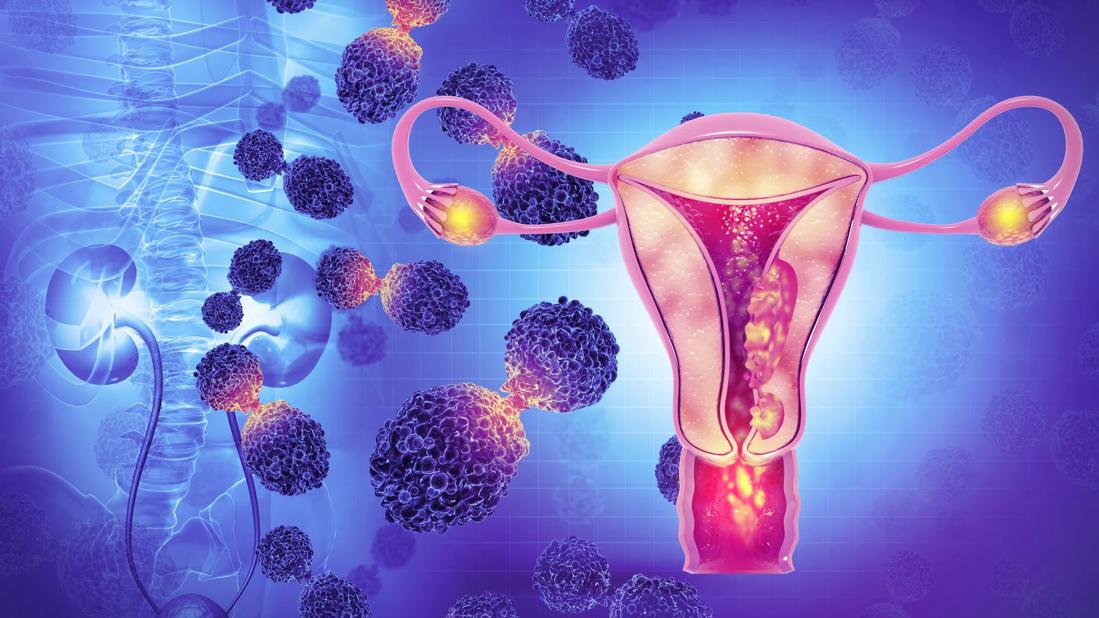Study shows improved outcomes over open surgery

Endometrial carcinoma is one of the most common gynecological cancers in patients over 65, but it hasn’t always been treated as aggressively in them as it has in those who are younger. A recent study involving the largest patient cohort to date confirmed that laparoscopy and robotic surgery offer increased longevity compared to laparotomy.
Advertisement
Cleveland Clinic is a non-profit academic medical center. Advertising on our site helps support our mission. We do not endorse non-Cleveland Clinic products or services. Policy
The results, say researchers, support the contemporary trend in bringing aggressive interventions to a patient population that once was assumed to be less interested in undergoing surgery for the disease.
“This research responds to a very basic clinical questions that we face as a gynecologic oncologist,” says Joel Cardenas Goicoechea, MD, MBA, a specialist in Gynecologic Oncology at Cleveland Clinic Florida. “When we see patients diagnosed with endometrial cancer in their golden years, how do we intervene? The main purpose of the study was to evaluate whether a particular surgical intervention has benefits for survival.”
The study, Survival after Minimally Invasive Surgery in Older Women with Endometrial Carcinoma, was published in Anticancer Research 42: 75-85 (2022). Dr. Cardenas-Goicoechea was first author on the manuscript.
The research holds an important message for primary care physicians, gynecologists, and for patients themselves, Dr. Cardenas-Goicoechea says.
“Sometimes patients feel they are too old to have surgery, even if it’s for a disease that we can cure,” he says. “We cite a survey that specifically asked older patients if they want to be as aggressive with treatment as younger patients. The answer was yes, but the perception among some physicians was that older patients would say, no, I don’t want to do anything.”
Some of that might be holdover from when the standard surgical treatment was laparotomy, which holds an increased risk of infection and typically requires a longer hospital stay. Those risks are reduced in hysterectomies performed with laparoscopy or robotics, which have become standard over the last decade.
Advertisement
The researchers used data from the National Cancer Database, which is a joint project of the Commission on Cancer of the American College of Surgeons and the American Cancer Society, to identify 42,458 women over 65 with endometrial cancer who underwent hysterectomy as the first line of treatment from 2010 to 2015. Median age at diagnosis was 71. The surgery entailed total hysterectomy, bilateral salpingo-oophorectomy, and lymph node assessment.
Within that cohort, 12,099 underwent open surgery; 7,898 had laparoscopic surgery, and 22,461 had the robotic procedure.
Five-year survival rates were the primary focus. Other outcomes reviewed included unplanned readmission, 30-day and 90-day mortality rates, and length of hospital stay.
Advertisement
In 2021, researchers estimate, there were more than 66,570 new cases of endometrial cancer and 12,940 deaths from uterine cancer in the United States.
“Life expectancy for women in the United States is up to around 81 years old,” says Dr. Cardenas-Goicoechea. “We have to think about helping those patients who are older and dealing with a common gynecologic cancer that has the best prognosis in terms of overall survival.”
Comorbidities common in aging populations — heart disease, stroke, diabetes – must be part of the assessment, but Dr. Cardenas-Goicoechea adds that “as long as those patients can be medically optimized for a two- or three-hour operation, they will be fine. Those patients will enjoy better quality of life and potentially better survival.”
More research is needed to strengthen the understanding of the treatment of older patients with endometrial cancer, because there are biological differences between them and younger patients, Dr. Cardenas-Goicoechea says.
“When you do a clinical trial, you have specific criteria you are focusing on, and that may necessitate excluding patients with a history of heart attack, stroke, diabetes or other chronic diseases that are common in the elderly. But we need to find ways to include those patients so we can understand the picture more fully," he says.
Geriatrics expertise also is needed during treatment and research, Dr. Cardenas-Goicoechea adds.
“Disease management is different in the elderly,” he says. “Patients may need a geriatric evaluation to address issues such as polypharmacy, life expectancy, quality of life, and what needs to be done to medically optimize a patient for a three-hour surgery. All of those kinds of studies need to be done moving forward.”
Advertisement
Advertisement

Large retrospective study suggests DOACs are safe, effective alternative to low-molecular-weight heparin in complex patient population

Care paths and research initiatives aim to answer unmet clinical needs

Study shows high rate of hematologic responses, low rate of disease progression

Bispecific antibody bridging therapy deepens durability of BCMA CAR T-cell therapy without overlapping toxicities in patients with relapsed/refractory multiple myeloma

Phase 2 study brings pivotal advances in treatment efficacy and safety for the most challenging-to-treat population

Patient with quadruple refractory multiple myeloma achieves complete response with cell therapy

Distinct baseline immune profiles can predict response and resistance to different types of CAR-T cells.

National Blood Clot Alliance collaborates with faith-based organizations on first-of-its-kind church bus tour